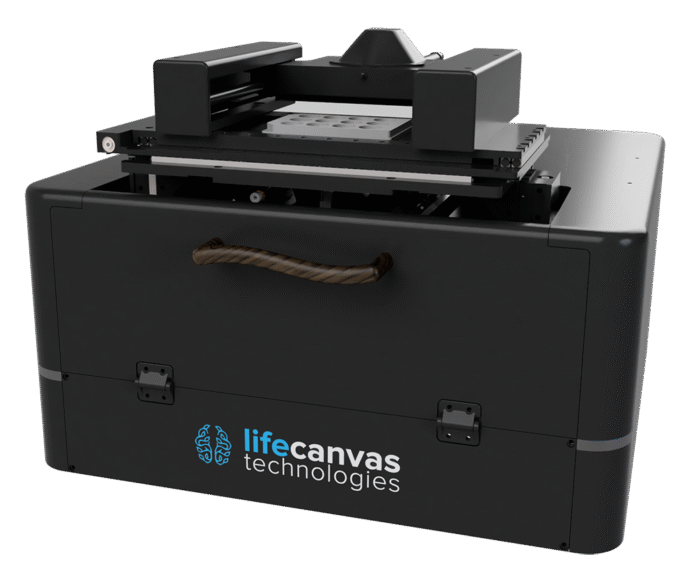CAMBRIDGE, Mass. — LifeCanvas Technologies has launched DALISPIM, a new open-top light sheet microscope designed to deliver high-speed, high-resolution 3D imaging with unprecedented sample compatibility. Powered by the company’s patent-pending Depth Adaptive Light Interface (DALI) technology, DALISPIM enables seamless imaging of tissues in standard sample carriers such as multiwell plates, marking a major advance in high-throughput spatial biology for drug discovery and disease modeling.
DALISPIM combines the versatility of an inverted microscope with the power of high-speed volumetric imaging, allowing researchers to examine tissues directly in standard laboratory formats including well plates, Petri dishes, slides, and organ-on-a-chip devices. The system supports multiplexed experiments and can be paired with confocal microscopy for follow-up high-resolution analysis, offering a fully integrated imaging workflow.
Built for unmatched versatility, DALISPIM uses DALI technology to achieve aberration-free volumetric imaging of plated samples up to 6–8 millimeters deep, without the need for immersion baths. Researchers can easily study intact organs, organoids, biopsies, tissue sections, and small model organisms. The system leverages patented axial sweeping technology to rapidly produce uniformly high-resolution images across the full field of view.
DALISPIM also features intuitive software that guides users through alignment, tiling, and acquisition settings, simplifying setup and operation for both routine and advanced imaging tasks. To support end-to-end workflows, LifeCanvas provides a complete post-processing suite for transforming raw image data into 3D volumetric datasets. The company’s MOSAIC networked data storage platform further enhances efficiency by providing scalable, high-performance storage optimized for large light sheet microscopy datasets.
With DALISPIM, LifeCanvas expands its commitment to delivering cutting-edge imaging solutions that empower scientists to accelerate discovery, streamline workflows, and advance understanding of complex biological systems.


